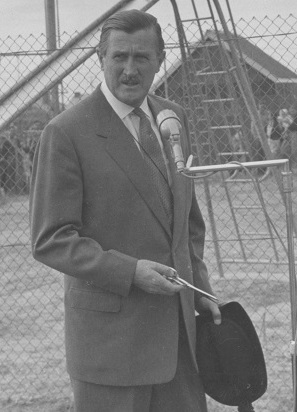Robert George (RAF officer) facts for kids
Quick facts for kids
Air Vice Marshal Sir
Robert Allingham George
|
|
|---|---|

George in 1956
|
|
| 24th Governor of South Australia | |
| In office 23 February 1953 – 7 March 1960 |
|
| Monarch | Elizabeth II |
| Premier | Sir Thomas Playford |
| Preceded by | Sir Willoughby Norrie |
| Succeeded by | Sir Edric Bastyan |
| Personal details | |
| Born | 27 July 1896 Cromarty, Scotland |
| Died | 13 September 1967 (aged 71) Marylebone, London |
| Nationality | British |
| Military service | |
| Allegiance | United Kingdom |
| Branch/service | British Army (1914–18) Royal Air Force (1918–52) |
| Years of service | 1914–52 |
| Rank | Air Vice Marshal |
| Commands | AHQ Iraq and Persia (1944–45) RAF Hawkinge (1937–39) No. 33 Squadron (1932–34) No. 100 Squadron (1930–31) |
| Battles/wars | First World War Second World War |
| Awards | Knight Commander of the Order of St Michael and St George Knight Commander of the Royal Victorian Order Knight Commander of the Order of the British Empire Companion of the Order of the Bath Military Cross Commander of the Royal Order of George I (Greece) |
Sir Robert Allingham George (born July 27, 1896 – died September 13, 1967) was a very important person. He was a senior officer in the Royal Air Force and later became the Governor of South Australia. He served as Governor from 1953 to 1960.
Robert George was born in a place called Cromarty in Scotland. He went to school in Invergordon and Inverness. In 1927, he married Sybil Elizabeth Baldwin.
Contents
Military Career and Service
When the First World War started in 1914, Robert George joined the army. He was part of the Seaforth Highlanders and fought in France. Later, he moved to the Royal Flying Corps, which was an early air force. He was given the Military Cross award for his brave night bombing missions.
In 1919, he officially joined the Royal Air Force (RAF). He became the leader of No. 100 Squadron in 1930. Then, in 1932, he led No. 33 Squadron.
World War II Service
Before the Second World War, George worked in Singapore for the RAF. From 1937, he was in charge of RAF Hawkinge air base. When the Second World War began, he was working in Ankara, Turkey, as an Air Attaché. This means he was a military expert helping with air force matters.
In 1944, he became the Air Officer Commanding for RAF forces in Iraq and Persia. After the war, he worked in Paris until he retired from the RAF in 1952.
He received several important awards for his service. In 1944, he was made a Commander of the Order of the British Empire. In 1948, he became a Companion of the Order of the Bath. He was promoted to Air Vice Marshal in 1950. In 1952, he was knighted, becoming Sir Robert George.
Governor of South Australia
Sir Robert was chosen to be the Governor of South Australia in August 1952. He and his wife, Lady George, arrived in Adelaide early the next year. The Premier of South Australia, Sir Thomas Playford, welcomed him. He said that governors should be "an inspiration in times of danger."
Sir Thomas Playford's words turned out to be very true. South Australia faced many challenges during Sir Robert's time as Governor. There was an earthquake, a big fire, and a huge flood.
Dealing with Disasters
In March 1954, Adelaide had its worst earthquake ever. It damaged many buildings, including Government House, where the Governor lived.
Less than a year later, in January 1955, a terrible wildfire called the Black Sunday bushfires destroyed the Governor's summer home at Marble Hill. Sir Robert, Lady George, and their staff had to hide under wet blankets to stay safe. They were very lucky to escape. Sadly, all their belongings were lost in the fire. They had moved their things to Marble Hill because Government House was being fixed after the earthquake.
Finally, in 1956, the 1956 Murray River flood was the biggest flood ever recorded in the area. On August 20, Sir Robert flew over the flooded areas in a small plane. He said he was "appalled at the tremendous area underwater and the terrific damage."
Governor's Personality
Sir Robert was known for being a bit unique. He once asked Premier Playford for his own helicopter! People admired his bravery. However, some thought he was old-fashioned. He was known for being impatient. He also enjoyed playing polo and often carried a fly-whisk and a cane.
Lady George was a big supporter of many charities. But her ideas about traditional family roles were not popular with everyone. For example, at the opening of new labs at a girls' college, she said, "The most important thing for a girl is to learn how to run a home well."
Retirement and Death
Sir Robert and his family moved back to England in 1959. He did not take on any more government jobs after that. He died in a London hospital on September 13, 1967.

